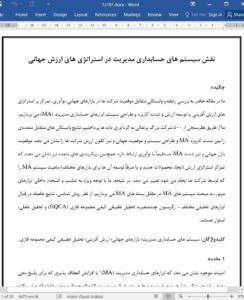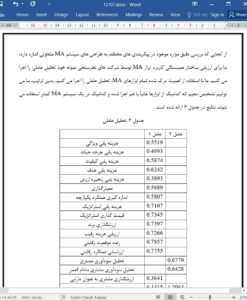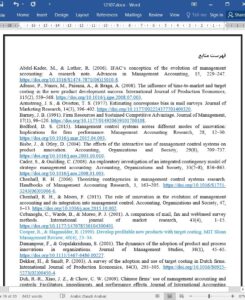Abstract
In this paper, we explore the relationship and interdependencies of firms’ positions in global markets, innovation, foci on value creation or value development strategies and their intensity of use and system design of management accounting (MA) tools. We collect data through a survey of the 500 largest Portuguese firms. The results show multiple interdependencies of MA intensity of use and system design and global positioning as well as the value foci of firms. Global market positioning, as well as MA intensity, is directly associated with innovation. The multiple configurations also show that the value strategy focus (creating new products or solely developing them for different markets) changes the nature of the MA system put in place by firms. Consequently, we contribute to the discussion of MA systems vs MA packages by specifically addressing the fit and internal consistency of those tools. Methodologically, the results are robust to different analytical tools - multivariate regression, fuzzy-set qualitative comparative analysis (fsQCA) and factor analysis.
1. Introduction
The existing literature shows that management accounting (MA)3 tools are associated with the increasing flexibility that is necessary to respond to ever-present market changes (e.g. Nixon & Burns, 2012). Chenhall and Moers (2015) point to the fact that accounting systems moved from simple planning and control tools to more complex innovation-oriented systems. IFAC (1998) identifies four stages of evolution. These stages differ in their information provision and resource management. Initially, MA tools were focused on the determination of product cost. In the second stage, they were characterized as parts of management control systems. In the third stage, due to increased competition and rapid technological development, the tools were focused on the reduction of wasted resources. Finally, the fourth stage emphasized value creation. To align cost management with company strategy, the implementation of different strategic cost management tools became imperative (Cooper & Slagmulder, 1999).











